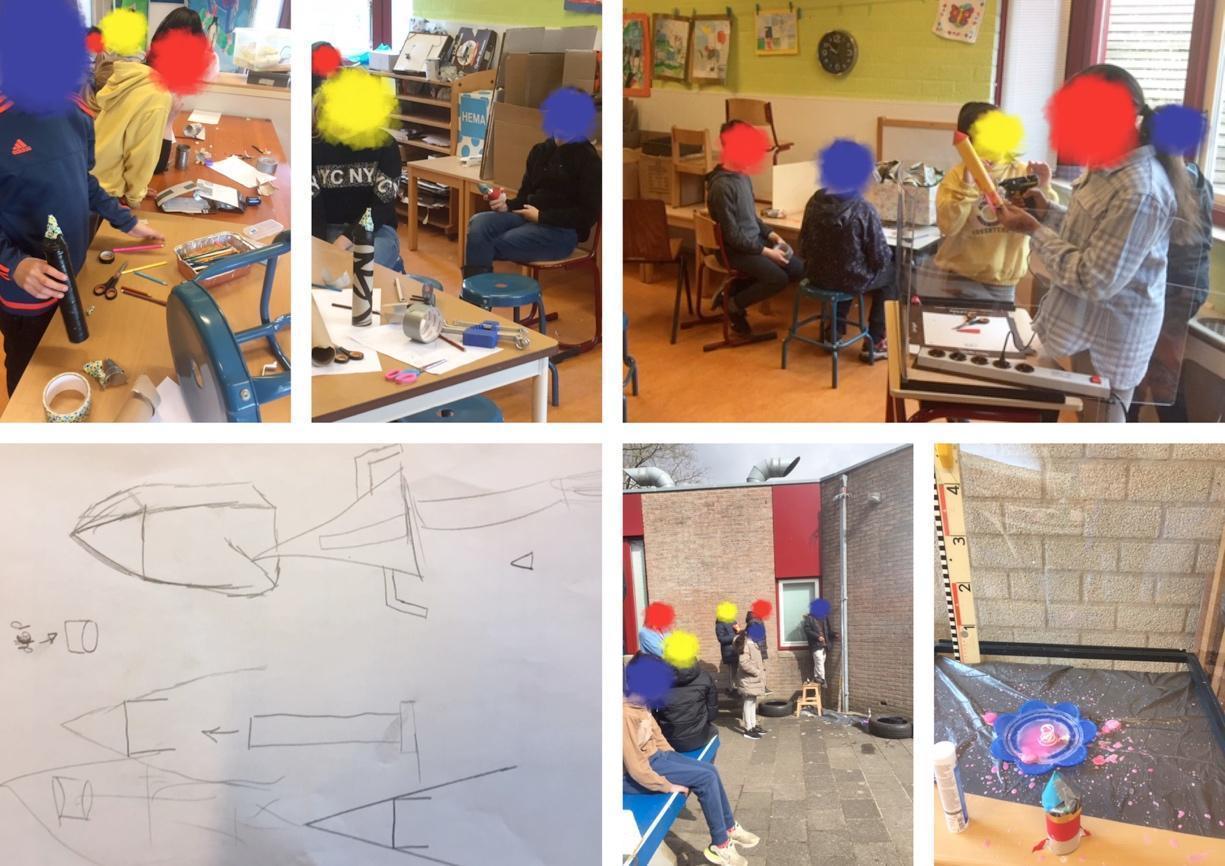Forces of natureReveal the forces of nature present in our everyday

Ready for action?
What
The possible connections with your curriculum
Who
The people who take up the teacher role
Where
The locations where learning takes place
With
The community stakeholders to collaborate with
Short abstract
In a series of experiments, students will explore the forces of nature related to motion and present what they learn to an audience. They will begin by building models of cars and exploring how they can change the design to impact the motion of the car. They will then take a trip to see what it is like to learn at a secondary school, and learn about the laws of motion which explain their experiences when building cars. They will also learn about other laws of physics to be applied in future experiments. Armed with this knowledge, students will design rockets and ‘egg protectors’ in a series of experiments where they will apply scientific theories to their designs, make predictions, and use test data to form conclusions.
The students will build their own car and explore forward motion by using a balloon as a motor. Through experiential learning, they will develop an understanding of the laws of motion and the concept of aerodynamics.
The students will explore different types of wheels and find out which work best by experimenting with materials, dimensions, texture and structure. They will learn how friction and stability affect motion.
Students will visit a neighbouring secondary school to hear a guest lecture about the forces of nature. They will have the opportunity to get involved in some of the demonstrations, and ask questions that will help them in the upcoming Learning Units.
Students will draw on the knowledge gained from the previous Learning Unit to design and build their own rockets to see which design flies best. They will learn about air pressure and combine this with their understanding of aerodynamics. They will improve on their previous testing technique by applying the scientific method.
The students will design an ‘egg protector’ and test their design by dropping the egg from a height. They will learn about gravity, suspension (springs) and learn to explore and use material properties. They will further develop their use of the scientific method in their experiments, using this to inform their design decisions.
Previously, students tested the impact of hitting the ground on a falling object – could they prevent it breaking on impact? This time they will explore the impact of a falling object on an object on the ground, such as the impact of a falling meteor on the earth. The students will design a second ‘egg protector’ and test their design by dropping a stone onto their egg.
Students will present their research and connect it to the theory they have learned. They will elaborate on their process and the outcomes, sharing these with the guest teacher and their parents. The presentation will be accompanied by eating pancakes made from the eggs which survived.
Teacher feedback
Aha moments
- Pupils’ creative problem-solving improved when they were not able to see examples/the solutions of other groups.
- In LU2 they benefited from having access to the whole school to design and carry out their experiments as this broadened the parameters they worked with.
Uh oh moments
- Students were confused between physics and earth sciences. A physics knowledge harvest would have been beneficial before we began to determine students’ prior understanding.
- Some students were disappointed when they didn’t have time to complete their experiments by the end of the lesson. Helping them to plan their time accordingly is important so that they have a full set of data to work with.
- Rocket testing wasn’t as successful, there was a lot of waiting around. Fewer but bigger groups would have solved this.
- Where pupils were shown example design solutions, they didn’t use their creativity to explore other options.
General tips
- It’s worth taking photos of students’ creations before testing as some were destroyed or irretrievable afterwards!
- Be careful with examples, if you name something as a good example it can result in an activity where all students go for the same solution.
- In LU4, sometimes the cap was placed too tight on the tube, so the rocket wouldn’t launch. Be aware of this, practice before you do this with students.
- For LU5/6, name the eggs and give them a face, students will feel compassion for the egg and are less likely to feel the urge to break it on purpose.